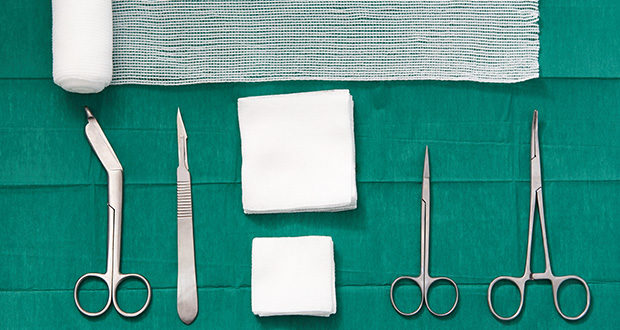An Australian peak body is using Wound Awareness Week (15–21 August) to push for the government to start recognising wound-related harm in aged care.
Advocacy organisation Wounds Australia has said the federal government is sleeping on the job while 350,000 older people suffer daily from chronic wounds.
The peak body says its plea submissions to the 2022-23 pre-budget and the Royal Commission into Aged Care were ignored, calling the latter's response an ”almost complete failure for older Australians”.
"Wound care is the missing piece of the puzzle in the federal government's aged care reforms," Wounds Australia Chair Hayley Ryan said.
"Wounds can lead to significant decreases in quality of life, to amputation, and sometimes even death.
"We're calling on the government to act, which will save hundreds of millions of dollars and prevent thousands from needing medical treatment each year."
They estimate the state can save over $166 million annually by providing appropriate treatment for venous leg ulcers, one of the most common wounds in older people.
According to their calculations, people with venous leg ulcers are spending $236 million in out-of-pocket expenses over five years.
"Pressure injuries that are preventable are costing Australia's health budget nearly $1 billion each year and result in over 500,000 lost hospital bed days," Ryan said.
"The 420,000 Australians affected by wounds is leading to the budget forking out $3 billion in treatment, which is around 2% of the health expenditure."
The peak organisation chose the catchphrase, 'the solution is bleeding obvious', to underline the need for appropriate funding and management of wounds in healthcare.
It is pushing for mandatory wound care units in aged care, tertiary courses and for the government to start reimbursing providers and in-home care for ongoing wound treatment.
"The current recommendation was to look at experts within the hospital system, but that is not an appropriate approach – we know they do not have time," Ryan said.
"At the moment, we're seeing the worst workforce challenges in many centuries.
"Wound care is really a specialty area, so we are urging experts to provide their services in the aged care areas."
Ryan said there had been too many missed opportunities to improve the health of older Australians, which could have easily been remedied by taking affordable steps.
"We're not asking much here – we're asking for dignity and quality care for our ageing population."
Calling it 'the hidden epidemic', the peak body said there's often shame attached to people living with chronic wounds.
People don't want to go out into the community with these wounds because they come with some odour, or fluid leaking through the dressings, Ryan explained.
"So we find that the elderly person might isolate and not seek the needed treatment.
"Then the pandemic added more fuel to the fire, where we're seeing fewer people wanting to have their wounds treated, which we're finding really hard to manage or heal at their later stage."
Aged Care Insite also spoke with registered nurse and professor Marilyn Cruickshank from Griffith University, who agreed it's an important issue that can lead to severe consequences.
"Complications such as bloodstream infections are really dangerous for older people," Cruickshank said.
"It can also just be very painful for people as well – it can lead to pain and suffering."
Chronic wounds such as diabetic foot ulcers, venous leg ulcers and other pressure wounds are common in older people due to a combination of health factors that increases the risk.
As we become older, we lose collagen levels in our skin and have less fat underneath, Cruickshank explained.
"Our skin integrity is not the same as when we're young.
"For example, you may bump into something. You might get a bruise when you're younger, but when you are older, that can break the skin.
"And it will take longer to heal."
Other medical conditions such as reduced heart or kidney functioning and lower blood circulation through the skin also play a vital role in someone developing chronic wounds.
"It's like the swiss cheese model where it's not just one thing; it's a collection of things that all predispose older people to wounds," Cruickshank said.
"So it can be like a cycle, a perpetuating cycle."
She said it's essential that aged care homes have precautions in place so that residents don't fall or hurt themselves.
"Having registered nurses in aged care homes helps supervise healthcare staff working there to make sure the residents are monitored and that there's an escalation of care if required."
She added aged care workers should also routinely check residents for wounds and have regular inspections.
For example, when residents are bathed or change clothes, nurses can inspect their skin integrity and look for red marks.
"Or when they spend a lot of time in bed, nurses should ensure residents are turned frequently to mitigate the risks of pressure wounds," Cruickshank said.
"Just having a close observation and knowing the patient so if anything changes, immediate attention can be given to prevent a wound from occurring or from getting worse."
Do you have an idea for a story?Email [email protected]
 Aged Care Insite Australia's number one aged care news source
Aged Care Insite Australia's number one aged care news source


What on earth do you expect with so many diabetics and seriously compromised aged residents? I wonder if you read your own headlines sometimes. The “epidemic” is entirely predictable based on the age and co-morbidities of the group. Compare this to a hospital group of same age and co- morbidities, you’ll find the data isn’t different.